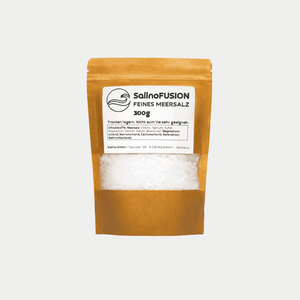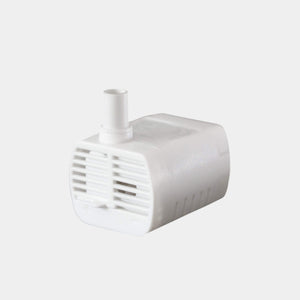When air becomes a burden – A silent danger in your own home
It often starts gradually. A scratchy throat, dry eyes, an occasional cough. "It's probably just the time of year," many think – and open the window. What they don't know: The air outside isn't always better. And inside, where we spend up to 90 percent of our time these days, an underestimated danger lurks: poor indoor air quality.
Indoor air isn't just empty space. It's filled with everything we can't see: particulate matter from traffic and printers, volatile organic compounds from furniture and cleaning products, mold spores from the wall behind the closet. We breathe all of this in every day – and our bodies react. But we rarely immediately think of serious illnesses.
Numerous studies show that poor indoor air quality can cause more than just discomfort. It's a risk factor—and sometimes even a trigger—for five of the most common illnesses for which people in Germany seek medical treatment. Illnesses that paralyze us, weaken us, and reduce our quality of life. Illnesses that could be prevented if we knew what surrounds us every day.
When your breath catches – asthma and its invisible triggers

The creeping strain in your own four walls
There are days when everything seems to be going well – and yet you still feel like you're out of breath. People with asthma know this feeling well. A pressure on the chest, a hissing breath, the sudden tightness, as if someone were cutting off your airway. Asthma is not a rare disease. According to the Robert Koch Institute, around one in twenty people in Germany suffers from it – even more frequently among children.
Asthma is a chronic inflammatory disease of the respiratory tract. The mucous membranes become hypersensitive to stimuli—including not only pollen and cold air, but also particulate matter that accumulates in carpets, sofas, and curtains, VOCs (volatile organic compounds) from paints, varnishes, and furniture, and mold spores, even invisible ones.
Why children are particularly at risk
These substances accumulate especially in poorly ventilated or overheated indoor spaces. A subtle contamination – barely noticeable, but highly effective. Studies show that indoor air in modern homes can be up to five times more polluted than outdoor air. This is especially dangerous for children. Their respiratory tracts are even more sensitive, their lungs still developing.
If a child coughs in the morning and lies wheezing in bed at night, it could be due to the air in the room —not a suspected infection. But even adults often underestimate the triggers in their own home. A new couch that smells fresh can emit irritating chemicals. A beloved carpet is a dust trap that stirs up more dust than it removes when vacuuming.
Simple measures with a big impact
The good news: Asthma is manageable. By critically examining your own spaces, you can reduce the burden—and with it, the symptoms. Air purifiers, regular ventilation, and removing unnecessary textiles—all of these things help. And sometimes it's also the realization that a modern home doesn't automatically mean healthy air.
The lungs are not silent – Chronic bronchitis as a result of silent irritation
If the cough persists
People with chronic coughs often assume they have a cold they haven't had. A persistent infection that hasn't been properly treated. But what if the cough persists – day after day, week after week? What if mucus makes breathing difficult, even during periods without a flu-like infection? Chronic bronchitis is an underestimated condition. According to the German Respiratory League, approximately one in ten people in Germany suffers from it – especially smokers, but not only.
Particularly insidious is so-called "living space-induced bronchitis." A term hardly anyone knows – but one that many unconsciously live with. Dry, heated air in winter, pollutants from furniture, chemical cleaning agents, dust – all of this continuously irritates the bronchi. The mucous membranes produce more mucus to protect themselves – but the lungs' self-cleaning processes can barely keep up.
Particularly at risk: people working from home
The symptoms are insidious: a tickly cough in the morning, the need to clear one's throat, the feeling of never being able to breathe completely freely. For many, this has become "normal" – they get used to it. But this habituation effect is dangerous. Untreated bronchitis can develop into chronic obstructive pulmonary disease (COPD) – with irreversible damage.
People who spend a lot of time at home are particularly affected: the elderly, those in need of care, and those working from home. Their exposure to poor indoor air quality is constant. At the same time, there's often a lack of awareness that "home" doesn't necessarily mean "safe." Winter also plays a role: heaters dry out the air, which paralyzes the cilia in the bronchi – the lungs' cleansing system.
Solutions in everyday life
The solution lies not only in medication, but in everyday life. Identifying and eliminating the sources of pollution can noticeably relieve the strain on your bronchial tubes. Sometimes it's a change in cleaning products. Sometimes an indoor air quality check is enough to detect mold growth. And sometimes it's simply a better understanding of how much air quality affects our inner selves.
When the skin cries – neurodermatitis, eczema and dry air

Dry air as the enemy of the skin
It starts with an itch. It's subtle. Then a red spot, perhaps a scaly edge. Some people scratch themselves until they bleed because they can't bear it any other way. Atopic dermatitis isn't just a skin disease. It's the expression of an overstimulated immune system – and is more strongly influenced by the air around us than many realize.
Dry indoor air is a skin enemy. Especially in the winter months, when heating is on, indoor humidity often drops below 30%. The skin loses moisture, and its barrier function suffers. This makes it vulnerable to irritants, allergens, and inflammation. This is fatal for people with neurodermatitis or atopic dermatitis: Their skin is already more permeable and reacts hypersensitively to the slightest changes in their environment.
Pollutants increase inflammation
But dryness isn't the only problem. Airborne pollutants—such as formaldehyde, plasticizers, or solvents—can also intensify inflammatory reactions on the skin. Freshly renovated homes and new furniture, in particular, emit such substances. Those who then spend hours every day working from home, under artificial light and in dry, heated air, often feel the effects immediately: tension, burning, redness.
Children with sensitive skin are also particularly at risk. Their skin is thinner, and their protective mechanisms are immature. Parents report that their children itch intensely in the evenings and sleep worse – symptoms that often improve with better humidity. It's not about making the home sterile. But it's about being aware: Air isn't empty space. It carries substances that can penetrate deep into the skin and the immune system.
The body communicates through the skin
Those who only resort to creams for recurring eczema or dry skin are often only treating the symptom—not the cause. Because the body communicates. And sometimes it does so through the skin.
When your head shuts down – sick building syndrome, headaches and mental exhaustion

The underestimated phenomenon
There are rooms you enter and almost immediately notice that something is wrong. Your head feels heavy. Your forehead tenses. Your concentration falters. And after a few hours, you feel like you didn't sleep well, even though you were just sitting in your office. What sounds like overwork is actually a well-known phenomenon: sick building syndrome.
The WHO described it back in the 1980s: a condition in which people in certain buildings develop health problems that subside upon leaving. Yet, to this day, it is often ignored—or ridiculed. The symptoms are diffuse: headaches, fatigue, difficulty concentrating, dizziness, dry mucous membranes. No fever, no rash. Just a constant feeling of "something's wrong."
Invisible triggers with visible consequences
The problem: The triggers are usually invisible. VOCs (volatile organic compounds), ozone, inadequate ventilation, mold in suspended ceilings, outdated carpets, laser printer emissions – a toxic mix that works slowly but continuously. Modern, tightly insulated buildings with poor air circulation are particularly affected.
Sick building syndrome can also manifest itself at home—especially in rooms with little air circulation, lots of electronics, and new furniture. Many people experience worse sleep, difficulty concentrating, or increased headaches after moving. They often blame it on stress or adjustment—and remain blind to the real causes.
Direct influence on brain performance
Indoor air quality has a direct impact on the brain. A 2017 study by the Harvard TH Chan School of Public Health showed that cognitive performance declines significantly with increased CO₂ concentrations and VOC pollution. Subjects performed up to 50% worse in tests of decision-making, strategy, and concentration – simply because the air quality in their rooms was different.
One thing is clear: our brain needs oxygen, but it's just as sensitive to pollutants. So, if you often feel dazed at work, can't relax after a tiring day working from home, or are constantly struggling to concentrate, you should think not only about your calendar, but also about the air around you.
Air for life – and why mindfulness begins with the air in the room
A new awareness of invisible influences
We breathe around 20,000 times a day. And yet we rarely think about what flows into us with each breath. Indoor air is more than just what surrounds us—it is what we become. It enters our lungs, through our blood, reaches our brain, our skin, our organs. And when it's polluted, it pollutes us.
The five most common illnesses associated with poor indoor air quality—asthma, chronic bronchitis, atopic dermatitis, concentration problems, and sick building syndrome—are not uncommon. They are a reality for millions of people, often without their knowledge. The connection remains hidden because air has no color, no taste, no voice.
Simple measures, big impact
But that's precisely why we need a new awareness: of the influence our spaces have on our health. Of the invisible stimuli that affect us every day. Of the small adjustments we can make to make a big difference. Because it's not about living in a perfect home—it's about living in a healthier one.
The good news: Even simple measures can help. Ventilate quickly instead of constantly tilting the room. Furniture made of low-emission materials. Greenery. Humidification during the heating season. And, for chronic complaints, even the use of salty air sources – the kind normally found only by the sea.
Salty air as a complementary aid
Some people report noticeable relief when using saline air at home – especially for respiratory problems. Compact devices like a mini saline bath can provide additional support: quiet, no filter changes required, high salt content, and easy to use in everyday life. They aren't a substitute for therapy, but they can make everyday life easier – gently, incidentally, like a silent companion in the background.
Ultimately, indoor air quality isn't a marginal issue. It's a fundamental building block of our well-being—and perhaps the quiet key to better health in a noisy world.



